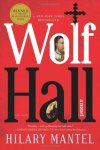The Massachusetts Library System (MLS) has a new series called “5 in 15 Booktalks,” where librarians talk about 5 titles in 15 minutes or less. I got to work with the excellent MLS staff to put together a “5 in 15 member edition” booktalk, where I talk about novels that feature real historical characters, including:
- Thomas Cromwell in Hilary Mantel’s Wolf Hall and Bring Up the Bodies
- Edith Wharton in Jennie Fields’ The Age of Desire
- Mary Mallon (a.k.a. Typhoid Mary) in Mary Beth Keane’s Fever
- Anne Morrow Lindbergh in Melanie Benjamin’s The Aviator’s Wife
- Vanessa Bell (nee Stephens) in Priya Parmar’s Vanessa and Her Sister
Watch the video (me talking over slides). It was hard for me to narrow my list down to five titles, so I mention some others during the talk, including The Other Boleyn Girl by Philippa Gregory, The Paris Wife by Paula McLain, Z by Therese Anne Fowler, Sutton by J.R. Moehringer, and a few others.
What’s your favorite novel featuring a real historical character? Or do you prefer your historical fiction to have a purely invented main character? Share in the comments!



